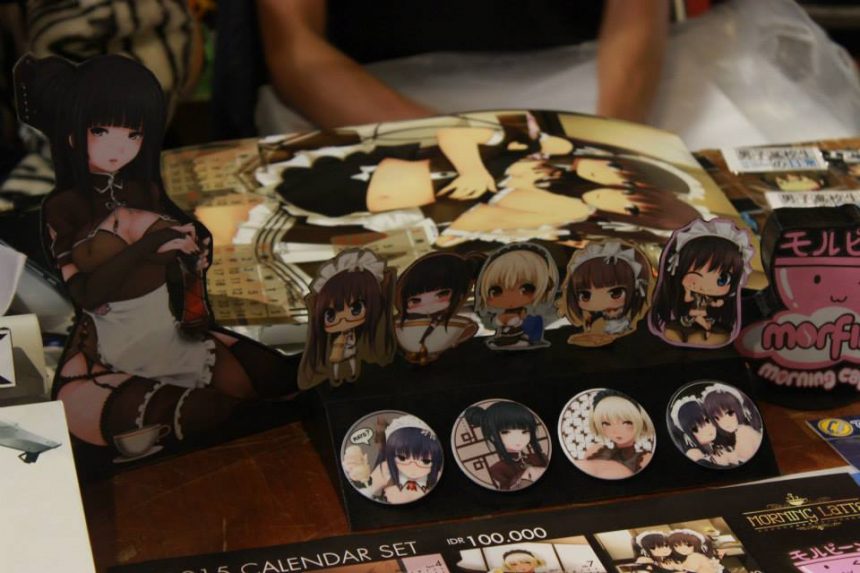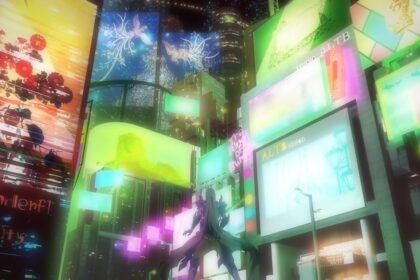The anime community is known for its passionate and dedicated fanbase, and one of the ways this enthusiasm manifests is through fanworks. Fanworks are creative expressions produced by fans that are inspired by or based on existing anime series. These fan creations can take various forms, including fan art, fanfiction, cosplay, music covers, and even fan-made animations. In this article, we will explore what fanworks are, examine their legality within the anime industry, and discuss their significance to the anime community.
What is Fanworks?
Fanworks are creative works made by fans that are derived from or inspired by existing anime series. They serve as a way for fans to express their love and appreciation for their favorite shows, characters, and storylines. Fan art involves artists creating their own visual interpretations of anime characters or scenes. Fanarts also often adding their unique artistic style to the original designs. Fanfiction, on the other hand, involves fans writing stories set in the universe of an anime series. This kind of creation tends to explore new narratives or expanding upon existing ones. Cosplay allows fans to bring anime characters to life by creating and wearing costumes that replicate their appearance. While music covers involve fans reinterpreting anime theme songs or composing original music inspired by the series.
Fanworks Legality in the Anime Industry
The legality of fanworks within the anime industry is a complex issue. While there is generally a positive attitude towards fanworks, anime creators and production companies must also consider legal and copyright issues. Fanworks often involve the use of copyrighted characters, settings, and storylines.
In most cases, fanworks technically infringe upon the intellectual property rights held by the creators and producers of the original anime series. Copyright laws grant exclusive rights to the original creators, including the right to reproduce, distribute, and create derivative works. However, the anime industry often takes a lenient approach towards fanworks. Many anime companies recognize the promotional value of fan creations and choose not to enforce their rights strictly. This tolerance is a testament to the symbiotic relationship between anime creators and their passionate fanbase.
There are also some instances where legal action was taken against fanworks. In 2016, Nintendo took legal action against the creators of the fan-made game “Pokémon Prism” by issuing a cease and desist notice. The game was a ROM hack of a Pokémon game and featured new gameplay elements. Similarly, Bandai Namco Entertainment has taken legal action against fan-made “Digimon” games, such as “Digimon: The Lost Evolution,” for copyright infringement.
Back In 2011, a fan translation group received a cease and desist notice from Kadokawa Shoten, the publisher of the “Haruhi Suzumiya” light novel series. The group had been translating the light novels into English and sharing them online. Consequently, the fan translations were taken down, and any further distribution was prohibited.
Further Readings: Comiket: Biggest Anime Fandom Convention in The World
Significance of Fanworks to the Anime Industry
Fanworks play a significant role in the anime industry, both as a form of free promotion and as a source of inspiration for creators. Fan art, for example, spreads across social media platforms, generating buzz and attracting new viewers to anime series. It serves as a visual testament to the impact and popularity of the shows, often becoming a catalyst for increased merchandise sales and official collaborations. Fanfiction allows fans to explore creative possibilities beyond the original storylines, offering alternative narratives and character interpretations.
Many anime creators and production companies have expressed their acknowledgment and appreciation for fanworks. They recognize that fan creations such as fan art, cosplay, and fanfiction contribute to the popularity and success of their series. Some creators actively engage with fan communities by sharing and retweeting fan art, participating in fan conventions, or expressing their gratitude through interviews and social media interactions.
Fanworks also serve as a platform for aspiring artists and writers to showcase their talent and gain recognition within the anime community. Fan artists can develop their skills by creating original artwork based on existing anime characters, honing their techniques and building a following. Similarly, fanfiction writers can experiment with storytelling and receive valuable feedback from fellow fans. This creative ecosystem nurtures talent, potentially leading to professional opportunities within the anime industry itself.
A Media to Foster Creativity Among Communities and Creators
Moreover, fanworks foster a sense of community among anime enthusiasts. Fans come together to share their creations, exchange feedback, and collaborate on fan projects. This collective passion creates a supportive environment that strengthens the bond between fans and the anime industry. Fan conventions and events provide spaces for fan artists and cosplayers to showcase their work, further enriching the community experience.
In some cases, anime creators actively collaborate with fans or fan communities. This collaboration can take the form of official fan art contests, fan-made music collaborations, or even incorporating fan creations into official merchandise or events. Such collaborations not only celebrate fan creativity but also strengthen the bond between anime creators and their fanbase.
The anime industry has seen the emergence of platforms and initiatives that encourage and support fanworks. For example, some anime studios provide official channels for fans to share their fan art or fanfiction. Websites and social media platforms dedicated to fan creations have also gained popularity, providing a space for fans to showcase their work and receive feedback and recognition from fellow enthusiasts.
There are several big events and conventions across the globe that celebrate fanworks related to anime, such as Comiket (Comic Market) in Japan and Anime Expo in US. These events and conventions demonstrate the global reach and impact of fanworks in the anime community. They offer platforms for fans and creators to come together, celebrate their love for anime, and showcase their creative talents. Through exhibitions, performances, and interactions, these events foster a sense of community. Events can also provide opportunities for fans to connect with like-minded individuals and gain recognition for their fanworks.
Conclusion
Fanworks serve as a testament to the deep connection between anime fans and the shows they love. While their legality is a complex issue, the anime industry recognizes the promotional value and creative inspiration that fan creations offer. Fanworks not only generate buzz and attract new viewers but also provide a platform for aspiring artists and writers to showcase their talents. Above all, fanworks foster a vibrant and tightly-knit community that celebrates the enduring allure of anime.













